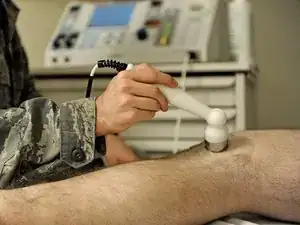Background and Identification
Therapeutic ultrasound refers to any type of ultrasonic procedure or treatment that uses ultrasound waves for therapeutic benefits. Although ultrasound is mainly known for its use in pregnancy imaging, ultrasound imaging procedures are also used in a variety of medical applications. Ultrasound images are created by sending sound through tissue at a frequency that humans can’t hear, using a transducer. The sound bounces off of dense surfaces, creating an image. The denser the mass, the clearer image you will see. Varying shades of grey on the monitor indicate varying densities.
Therapeutic ultrasound was introduced in the 1950s for clinical practice. Aside from monitoring pregnant women, ultrasound can able be used for targeted ultrasound drug delivery, ultrasound homeostasis, cancer therapy, and ultrasound-assisted thrombolysis. In these applications, the ultrasound waves pass through human tissue where the biological effect can be monitored. The ultrasound waves within tissues consist of very high-frequency sounds (between 800,000 Hz and 20,000,000 Hz) that cannot be heard by humans.
Therapeutic ultrasound can be used for treating chronic pain and promoting tissue healing. Physical therapists sometimes use therapeutic ultrasound to provide deep heating to soft tissues with the goal of increasing blood circulation to those tissues. Theoretically, this can decrease pain and promote healing. Ultrasound treatment may also be used with the goal of improving muscle flexibility to restore motion. Physical therapists sometimes use ultrasound energy for cavitation, or causing rapid expansion and contraction of microscopic gas bubbles around injured tissue. This is thought to speed the healing process.
